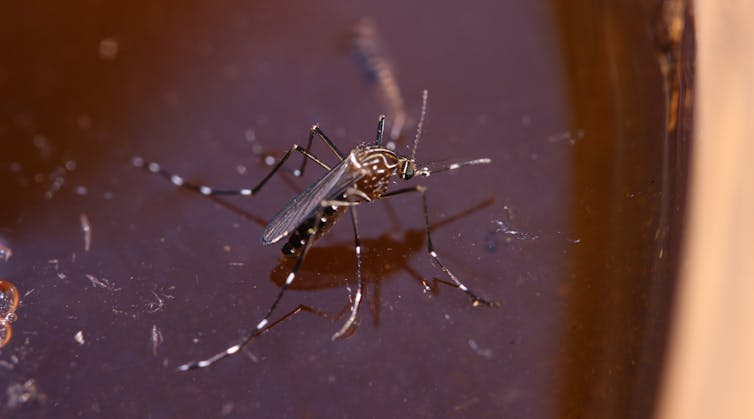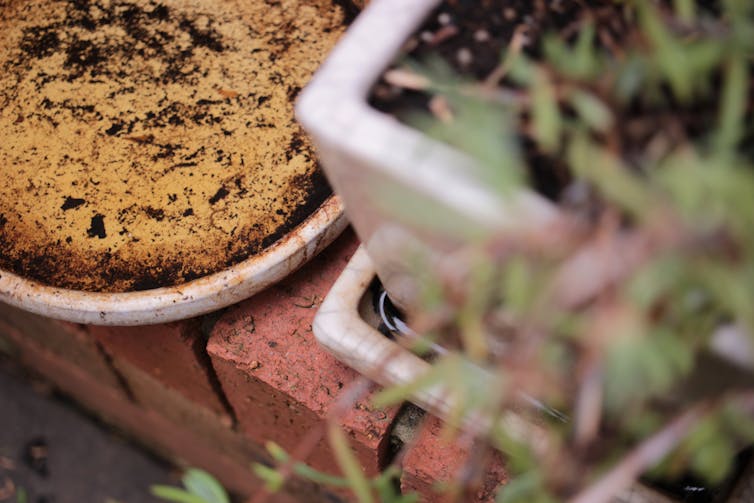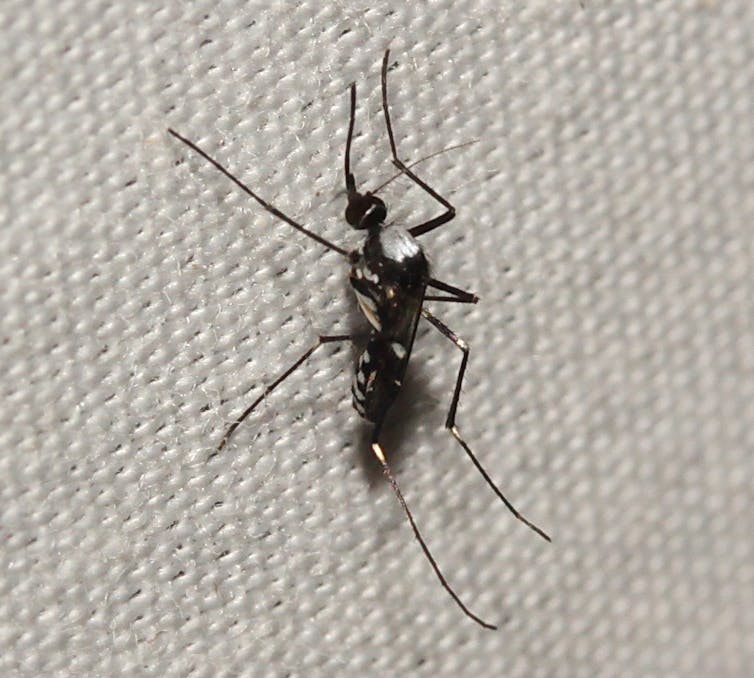
There are already plenty of mosquitoes in Australia. They bring pest and public health risks to many parts of the country.
Now a new species of mosquito, Aedes shehzadae, has been discovered 90 years after the first (and only other observation) of it in Papua New Guinea – and it’s thanks to citizen science.
Mosquitoes and their health threats
Mosquitoes are simple creatures, but they pose complex health risks. The recent widespread arrival of Japanese encephalitis virus, which caused dozens of cases of disease and five deaths, is a reminder of the threat mosquitoes pose in Australia.
To address this threat, there are mosquito and mosquito-borne pathogen surveillance programs in states and territories around the country. Our borders are checked by the Department of Agriculture Water and Environment for the arrival of invasive mosquitoes with international travellers, their belongings, or freight.
These programs collect valuable information on local and invasive mosquitoes. But they can’t be everywhere – which is where citizen science can step in.

We can learn more about mosquitoes, and their spread across the country, with the help of volunteer “citizen scientists”. Individuals or groups can participate in projects such as Zika Mozzie Seeker or Mozzie Monitors. Mozzie Monitors has expanded in recent years to become the only national program, primarily focused around the annual Mozzie Month.
Citizen scientists can also upload photographs of mosquitoes to online platforms such as iNaturalist, which provides opportunities to observe the insects in nature. An analysis of more than 2,000 mosquito observations uploaded to iNaturalist revealed an astonishing 57 species observed across Australia.
And one of the most remarkable observations uploaded to iNaturalist in recent years has been a mysterious and distinctive mosquito, Aedes shehzadae.
A discovery 90 years in the making
Aedes shehzadae was first captured in Australia by photographer John Lenagan in 2021, while on the lookout for moths in the Kutini-Payamu National Park (Iron Range) in Queensland’s Cape York.
The photo kicked off a cascade of investigations into mosquito collections held in research institutes and museums across Australia. They even stretched as far as the Natural History Museum in London.
We and our colleagues have detailed the circumstances around this unique discovery in this month’s edition of the Journal of Vector Ecology.
Lenagan’s photo wasn’t just the first time Aedes shehzadae was observed in Australia – it was also only the second time this mosquito had ever been formally recorded. The discovery may have gone unnoticed, had the photograph not been uploaded to iNaturalist and sparked interest.

The only other specimen of this mosquito was collected in Papua New Guinea in 1934, almost 90 years ago. It was collected by a remarkable unpaid entomologist named Lucy Evelyn Cheesman, and stored in the Natural History Museum, until being formally described in 1972 by the Malaria Institute of Pakistan entomologist M. Qutubiddin (first name unconfirmed). He named the mosquito after his daughter.
Cheesman was a tenacious naturalist who collected around 70,000 specimens of insects, plants, and other animals for the Natural History Museum – many during expeditions to the South West Pacific.
We don’t know much about Aedes shehzadae. We’re not even sure whether it’s a new arrival in Australia, or if it had simply not been observed before. In all likelihood it won’t pose a significant threat to our backyards.
But that can’t be said for other exotic and invasive mosquitoes knocking on our door. Mosquitoes such as Aedes albopictus, or the “tiger mosquito”, could be a game-changer for mosquito-borne disease in Australia.
Community assistance
Much has been said about the potential for citizen science to help health authorities identify exotic and invasive mosquitoes. This has been the case in Europe. And these programs may well be instrumental in tracking newly arrived mosquitoes that have hitched a ride with travellers or freight to the backyards and bushland of Australia.
We’re used to female mosquitoes biting us for blood, but we’re less aware of the flowers they visit to help pollination. We also don’t know a lot about the animals that eat mosquitoes, so perhaps some photographs of them caught in spider webs would be useful too.
There’s no doubt participants in citizen science projects can contribute to our understanding of native and invasive species distribution in meaningful ways. If Aedes shehzadae is anything to go by, anyone with a camera and some curiosity can be the discoverer of a new species, or new mosquito arrival.
Cameron Webb, Clinical Associate Professor and Principal Hospital Scientist, University of Sydney; Craig Williams, Professor and Dean of Programs (Pharmacy and Biomedical Sciences), University of South Australia; Larissa Braz Sousa, PhD candidate on citizen science and public health, University of South Australia, and Marlene Walter, Masters of Research Student, Walter and Eliza Hall Institute
This article is republished from The Conversation under a Creative Commons license. Read the original article.











